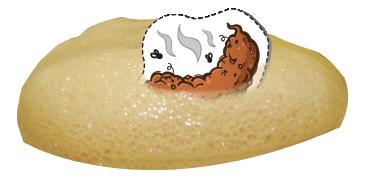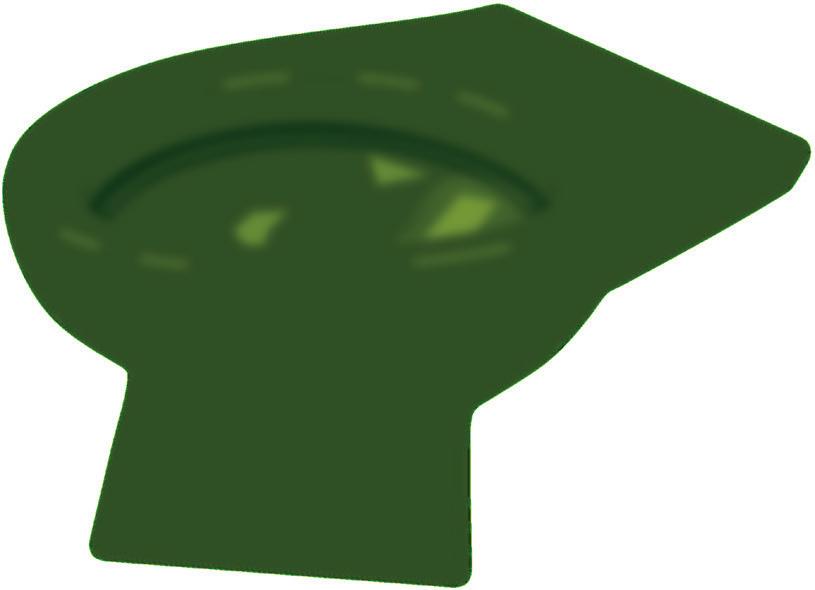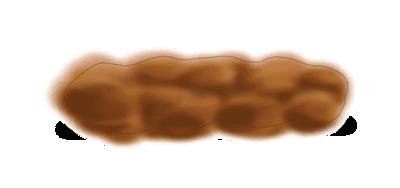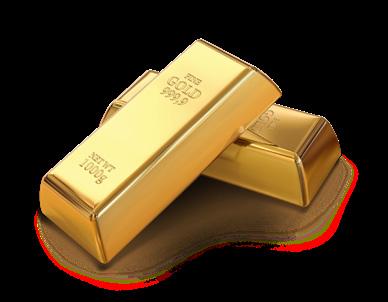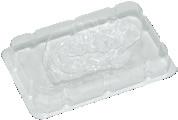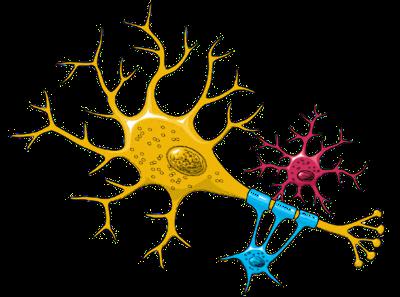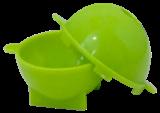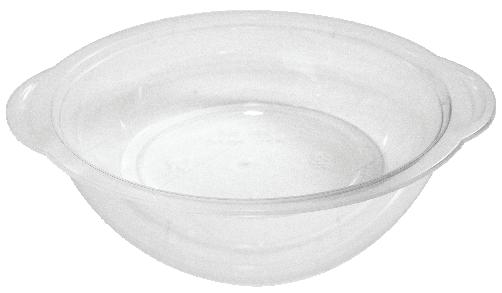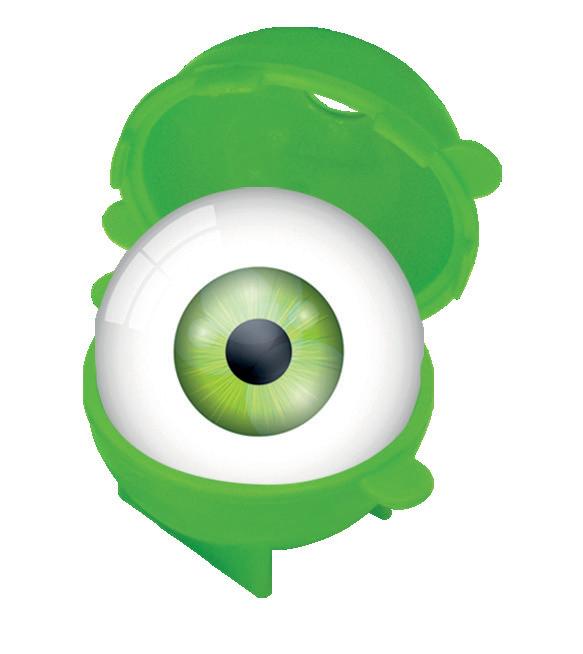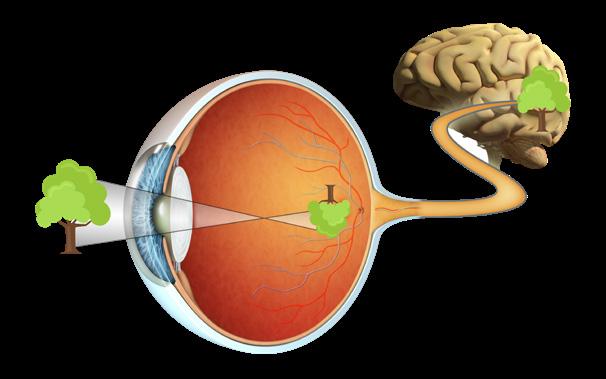










Dear parents and guardians
Through play, children develop different cognitive skills. Scientific studies show that when we are having fun or making discoveries during an experiment, a neurotransmitter called Dopamine is released.
Dopamine is known to be responsible for feelings like motivation, reward and learning and that’s why experiences are related to positive feelings. So, if learning is a positive experience, it will stimulate the brain to develop various skills.
Therefore, Science4you aims to develop educational toys that combine fun with education by fostering curiosity and experimentation.
Find out below which skills can be developed with the help of this educational toy!
The educational feature is one of the key strengths of our toys. We aim to provide toys which enable children’s development of physical, emotional and social skills.
1st edition 2024, Lisbon, Portugal
Author: Joana Horta
Scientific review: Inês Martins; Joana Horta
Conformity revision: Rute Cesário; Susana Ferreira
Project management: Inês Martins; Joana Lemos
Product development: Inês Martins; Joana Horta
Design management: Marcos Rebelo
Packaging design: Jorge Faria
Pagination: Jorge Faria
Illustrations: Eduardo Brito; Miguel Barradas
SAFETY RULES
GENERAL
ADVICE
LIST
DISPOSAL OF SUBSTANCES
KIT CONTENTS
1. Experimental activities
Experimental activity 1. Inside the stomach
Experimental activity 2. Fake vomit
Experimental activity 3. Toots and farts
Experimental activity 4. Unusual poop
Experimental activity 5. Sticky poo
Experimental activity 6. Sticky brain
Experimental
7. Disgusting ogre eye
All rights reserved. No part of this publication may be reproduced, stored in a retrieval system, or transmitted, in any form or by any means, electronic, mechanical, photocopying, recording, or otherwise, without the prior permission in writing of Science4you Ltd., or as expressly permitted by law, or under terms agreed with the appropriate reprographic rights organization. Any unauthorised use of this book, or any violation of this book’s rights company, to be fairly compensated in legal terms, and not excluding criminal liability for those who are responsible for such violations.
SAFETY RULES
- Read these instructions before use, follow them and keep them for reference.
- Keep young children and animals away from the play area.
- Store this set out of reach of children under 8 years of age.
- Clean all equipment after use.
- Make sure that all containers are fully closed and properly stored after use.
- Ensure that all empty containers and/or non-reclosable packaging are disposed of properly.
- Wash hands after carrying out experimental activities.
- Do not use any equipment which has not been supplied with the set or recommended in the instructions for use.
- Do not eat or drink in the play area.
- Do not allow chemicals to come into contact with the eyes or mouth.
- Do not replace foodstuffs in original container. Dispose of immediately.
GENERAL FIRST AID INFORMATION
- In case of eye contact: Wash out eye with plenty of water, holding eye open. Seek immediate medical advice.
- If swallowed: Wash out mouth with water, drink some fresh water. Do not induce vomiting. Seek immediate medical advice.
- In case of inhalation: Remove person to fresh air.
- In case of skin contact and burns: Wash affected area with plenty of water for at least 10 min.
- In case of doubt seek medical advice without delay: Take the chemical and/or product together with the container with you.
- In case of injury always seek medical advice.
ADVICE FOR SUPERVISING ADULTS
- Read and follow these instructions, the safety rules and the first aid information and keep them for reference.
- This set is for use only by children over 8 years.
- Because children’s abilities vary so much, even within age groups, supervising adults should exercise discretion as to which experimental activities are suitable and safe for them.
- The supervising adult should discuss the warnings, safety information and the possible hazards with the child or children before commencing the experimental activities.
- The play area should be kept clear of any obstructions and away from the storage of food. It should be well lit and ventilated and close to a water supply. A solid table with a heat resistant top should be provided.
- If materials which have not been supplied with the toy are suggested and used, make sure that they are suitable for this purpose and that they are in good condition (i.e. storage and shelf life).
- This toy contains colourings (pigments). Colourings can stain. Keep it away from objects and fabrics.
In case of poisoning by any of the components used in this toy, contact the anti-poison centre or the nearest hospital.
Please consult the following link for more information: UK https://www.npis.org/ EU https://poisoncentres.echa.europa.eu/appointed-bodies
In case of emergency dial:
EU 112 | UK 999 | USA & CAN 911 | AU 000
LIST OF SUBSTANCES SUPPLIED
Green Colouring INGREDIENTS: WATER, PHENOXYETHANOL, SODIUM BENZOATE, CI 19140, POTASSIUM SORBATE, CI 42090
Cornflour (CAS 9005-25-8) (C6H10O5)n
Fart Putty
INGREDIENTS: WATER, GLYCEROL, ALCOHOL POLYVINYL, BORACIC ACID
Recommendations for substances and mixtures: Do not ingest. Avoid contact with the eyes and mouth. Use only according to the instructions. Store in tightly closed containers. Keep in a cool, dry place. Protect from moisture, direct sunlight and heat sources.
DISPOSAL OF SUBSTANCES
Do not dispose of chemical substances and / or mixtures with domestic waste and household waste. For more details, contact a competent authority. To dispose of the packaging, use the collective collection points.

KIT CONTENTS




Green colouring



Fart putty




Brain mould

Plastic spatula



Googly eyes







Measuring cup



Pasteur pipette

Hi, Scientist! Are you ready to enter the world of Yucky Science and discover gross scientific facts of human body?

The digestive system is one of the essential systems in our body, composed of several organs (image 1). It is here where most of these phenomena that we find repugnant occur. Throughout the experimental activities, you will simulate some of them, such as vomit and poop!
This is going to be a really yucky adventure!

1. EXPERIMENTAL ACTIVITIES
EXPERIMENTAL ACTIVITY 1
Inside the stomach
What will you need?
Material included in the kit:

• Measuring cup
Extra material:
• Milk • Vinegar • Tablespoon • Bowl
Steps:
1. With the measuring cup, measure 50 millilitres (ml) of milk and pour it in an bowl.

2. Measure 20 ml of vinegar, with the measuring cup, and add it to the bowl. Mix well with a tablespoon.

ATTENTION: when you finish the experimental activity throw away all used food.
BAH CURIOSITY!
Wait half an hour and see how is the milk then.
What happens


The milk is composed of fat (lipids), lactose, mineral salts and proteins. Acetic acid, found in vinegar, will cause the denaturation of casein, a protein found in milk.
The vinegar does the same as the gastric juice, produced by our stomach. Why? The gastric juice is composed of hydrochloric acid, mucous and enzymes, which, like vinegar, break down the large molecules of food into smaller particles.

GROSS ALERT: if you want to see the result even closer, use a strainer and separate the mixture.
ABSORPTION OF NUTRIENTS


PROTEIN
PEPTIDES
Bolus
Peristaltic movements (mechanical action)
Gastric juice
Hydrochloric acid + mucous + enzymes (chemical action)
Chyme +
Image 2. The process of food digestion.
EXPERIMENTAL ACTIVITY 2
Fake vomit
What will you need?
Material included in the kit:

• Cornflour
• Plastic spatula
• Pasteur pipette
Extra material:

• Green colouring

• Measuring cup
• Microwave • Fork • Oat flakes • Carrot • Knife • Freezer bag with ziplock • Water • Fridge • Vinegar • Bowl • Gelatine • Teaspoon
Steps:
1. With the measuring cup, measure 40 ml of water and place it in a bowl.
40ml
2. Ask an adult to heat the water in the microwave and, carefully, add a teaspoon of gelatine to the bowl. Wait 2 to 3 minutes.

3. Now mix everything with a fork so that the gelatine dissolves.

ATTENTION: ask an adult for help. 40ml 5x


00.03
4. With the Pasteur pipette, add a few drops of green colouring to the mixture.
5. With the measuring cup, add 20 ml of cornflour to the mixture and 5 ml of vinegar, with Pasteur pipette. You must take 5 measurements.

6. Mix everything with the plastic spatula and place it in the microwave for 30 seconds.

7. Sprinkle the mixture with a little oat flakes and other chunks of food, such as carrots cut into cubes, and place the flattened mixture inside a freezer bag with a ziplock and take it to the fridge.


ATTENTION: when you finish the experimental activity throw away all used food.
BAH CURIOSITY!
Surprise your friends with this vomit! How disgusting! The smell is due to the vinegar, which in this experimental activity simulates the gastric juice of our stomach.
But why do we vomit?
Vomiting, like other symptoms, is one of our body’s defence mechanisms. It is a way for the body to be able to get rid of substances that could be dangerous for us.
Wait about 30 minutes until the vomit is done!
Image 3. The path of vomit. 00.30
Vomiting, or vomit, is a forced and involuntary expulsion of partially digested food, ground or liquid, that is mixed with saliva and gastric juice (from the stomach), through the mouth (and sometimes the nose).
When the vomit comes up, the muscles of the stomach and intestine push the “food” up instead of down, so that it returns to where it came from - the mouth!
EXPERIMENTAL ACTIVITY 3
Toots and farts
What will you need? Material included in the kit:

Steps:
1. Open the fart putty and with your finger (index or thumb), press the viscous mass inside the pot. BAH CURIOSITY!Surprise your friends with this sound that can be quite embarrassing, but which can also cause a lot of laughs!
YOUWHATDO HEAR?
Doesthesound resemblethetootor a fart?
DID YOU KNOW...

That a single person releases 10 to 15 farts a day, even if we don’t feel them?
What happens?


The fart putty contains a viscous mass and also air. When we press the viscous mass in the pot, the air escapes and creates a sound similar to that of a fart, toot, or also the so-called pump!
The science here is related to the sound and how this spreads!
DID YOU KNOW...
That farts can be loud or silent? Everything depends on the pressure that is exerted. Vibration and air pressure can create different sounds, with high or low frequencies!
The sounds are caused by small movementsvibrations (waves), which travel through the air and the particles that surround us, to our ears.
Farts are the combination of various gases (hydrogen, oxygen, carbon dioxide, methane and hydrogen sulphide) which are then expelled by the anus.
Butwhydoweletout fartsanyway? Howdoesourbody producessomething thatsmellssobad?!
Some of these gases travel from our stomach to the anus, but most are produced by bacterial action in the large intestine, which is responsible for the production of faeces. All these gases in the digestive system have to “escape” in some way, and they do so in the form of farts! As the anus is firmly closed, when these gases force their way out this way, they cause the vibration of the air and consequently we hear the noise of the fart.
Bacterial action
Gas from:
- Ingested air - Fizzy drinks - Bloodstream - Chemical reactions in digestion

The production of farts.
STILL ABOUT VISCOUS MASSES...
The viscous mass of the fart putty is a slime!
Test its properties: observe its texture and stretch it!
Large intestine
DID YOU KNOW...
That the gas that makes your farts smell bad is hydrogen sulphide (H2S)? This is also the smell of rotten eggs! Yukkk...! And that the foods you eat influence the smell? Foods like beans or cabbage cause very stinky farts!
SCIENTIST, don’t forget that the gases are a sign of a healthy body, also derived from food that is rich in fibre!
Image 6. Polymerisation reaction.
Slimes are viscous substances which we call polymers! Polymers are very large molecules consisting of the repetition of small chemical units called monomers.
Steps:
EXPERIMENTAL ACTIVITY 4
Unusual poop
What will you need?
Material included in the kit:

• Cornflour

• Measuring cup
Extra material:
• Chocolate or coffee powder
1. Put 5 tablespoons of cornflour into a bowl.
2. Now add 1 to 2 teaspoons of chocolate or coffee powder.
3. In the measuring cup, measure 25 ml of water and add it to the bowl.



• Green colouring (optional)
• Pasteur pipette (optional)
• Water • Tablespoon • Bowl

4. Mix well with your hands until you get the desired consistency.
Is this poop solid or liquid?

W WBAH CURIOSITY!
- If you shake it slowly, it behaves like a liquid.
- But if you hit it hard, it’s going to be solid!
- If you hold it tightly, you can form a ball.
- If you let it go, it will become a liquid again!
Tip: if the unusual poop becomes very solid, add more water with the Pasteur pipette; if it becomes too liquid, add more cornflour.
Scientist, or less spoons of chocolate or coffee, and even green colouring to make the poop have the colour you want!
ATTENTION: when you finish the experimental activity throw away all used food.

What happens?


The unusual poop, which is both liquid and solid, is a non-Newtonian fluid. Meaning that its viscosity varies according to the force applied. When you apply a lot of force, the molecules bind and form a solid, but when you move it slowly, the molecules loosen and they behave like a liquid.




And what isviscosity?
Viscosity is a property of fluids (liquids and gases). The higher the viscosity, the more difficult it is for fluids to move.

SCIENTIST,
when we take a poop, it can also be solid or liquid. Do you know why?
Poop, also called faeces, is one of the results of our digestion. Digestion begins the moment you put food into your mouth and only ends when you go to the toilet.
Substances that are not digested or absorbed by the blood and lymphatic vessels pass into the large intestine, where they are turned into faeces. These are then pushed along the intestine until they are expelled through the anus.
Therefore, the appearance and consistency of the poop varies depending on our food.
Faeces contain 75% water and the solid part is a mixture of fibres, faecal bacteria, intestinal cells and mucous.

Water is a low viscosity fluid.
Honey is a high viscosity fluid.
DID YOU KNOW...
That faeces float in the water or not depending on what you eat throughout the day? This happens because it depends on the amount of fat or air inside the mass that results from the food consumed. For example, when we consume beans the volume of gas in the faeces increases, which causes the faeces to float more.


